“The start of a new industry in the piedmont…”
City Directories and History: The Rock Hill Brick Works was owned by Wm. N. Ashe, who lived near the brick facilities at the West end of West White Street. Listed in the 1908 Rock Hill City Directory.
The Yorkville Enquirer contained an ad on Jan. 22, 1885 – “Signed by W.N. Ashe, Jr., of McConnellsville and W.A. Anderson of Lowrysville. They offered for sale 500,000 first class brick which were located at both McConnellsville and Lowrysville on the Chester and Lenoir Railroad. Samples can be seen at the store of Capt. W.B. Smith in Clover, John R. Ashe in Yorkville, Ashe and Ashe in McConnellsville, Hope, Lowry and Co., at Lowrysville, and Heath – Crawford and Co., at Chester.”

The old McConnell Family Cabin, which gave the community its name, prior to moving to Historic Brattonsville for preservation. Image courtesy of the McConnells Family via the CHM.
The Herald reported on April 7, 1900, quoting from the Yorkville Yoeman stated – “Mr. W. N. Ashe of Yorkville has bought five acres of land from the Rock Hill Land and Townsite Company and will make brick there.”
The Herald reported on Nov. 7, 1900 – “Mr. Ashe of Yorkville has established a brick manufacturing plant near the Winthrop Stockade and it is now operating at full blast.”
The Herald reported on Aug 11, 1901 – “That Mr. Wm. N. Ashe, proprietor of the Rock Hill Brick Works, will furnish the bricks “about 35,000″ to be used in the extension of the Rock Hill Hardware Store. Mr. Ashe will also supply the brick to be used in erecting an oil mill in York. Mr. G.P. Dobson, who has been with Mr. Ashe, for some time, has secured a position with the Charlotte Brick Works near the river and will remove his family there.”
The Herald reported on April, 5th 1902 as reported by the Yorkville Enquirer – “Mr. W.N. Ashe has been in York. He has a large kiln of brick ready to burn and expects to fire it soon. He expects to begin making brick at both Rock Hill and York soon.”
The Herald reported on Oct. 11, 1902 – “That Mr. W.N. Ashe recently visited Spartanburg, where he is engaged in the manufacture of brick for two large cotton mills.”
On Jan. 28, 1903 the Herald reported – “W.N. Ashe, prop. of the Rock Hill Brick Works, lost a very valuable horse a few days ago from the blind staggers.”
The Herald reported on June 3, 1903 – Mr. W.P. Wylie has accepted a position with the Rock Hill Brickworks.”
The Rock Hill Herald reported on June 10, 1903 – “W.N. Ashe went to Greer Saturday to look after his business there.”
The Rock Hill Record reported on March 22, 1904 – “RH Brick Works is preparing to resume operations. They will boar an artesian well and make other improvements on the property.”
The RH Record reported on April 15, 1904 – “Mr. and Mrs. S.E. Mathis of Camden have moved to Rock Hill and have rooms at Mr. L.L. Wroton’s home. Mathis will be in charge of the Rock Hill Brick Works, which recently resumed operations.”
The Rock Hill Record reported on Aug 7, 1907 – “On Saturday evening, Frazier Anderson shot and killed “Tit” Jones, a colored man. Anderson is Supt. of Ashe’s Brick Works located near Winthrop College. He was paying the workers when Jones claimed he had been cheated and came at Anderson with a knife.”
The Record reported on March 30, 1908 – “Mr. G.L. Dobson, who has been connected with the Lancaster Mills for some time, has resigned and taken a position with the Ashe Brick Works in Rock Hill.”
The Herald reported on June 11, 1940 – “The City Council will borrow $11,500., to purchase property from W.N. Ashe adjoining Laurelwood Cemetery.”
—————-
Ashe Brick Co and W. N. Ashe by Paul M. Gettys, 2016
W. N. Ashe was born in York County on October 16, 1862, one of six children of John J. Ashe (1824-1878) and Sarah Rainey Ashe (1827-1892), who was from Sharon in York County. The family lived in the area of McConnellsville (now McConnells). William’s father John J. and his grandfather James Ashe were farmers. In the 1850 Census, John J. was 25 and unmarried and was living with his parents. In 1860, the family included parents James and Margaret Ashe, John J. Ashe, described as an “assistant farmer,” his wife, Sarah J. Ashe, three children, and Mary Rainey, possibly Sarah’s sister. In adjacent households were Robert Ashe, a farmer aged 56 and Samuel Ashe and wife Mary. Samuel was a farmer and was listed as 69 years old. Perhaps Robert and Samuel were brothers of James Ashe.
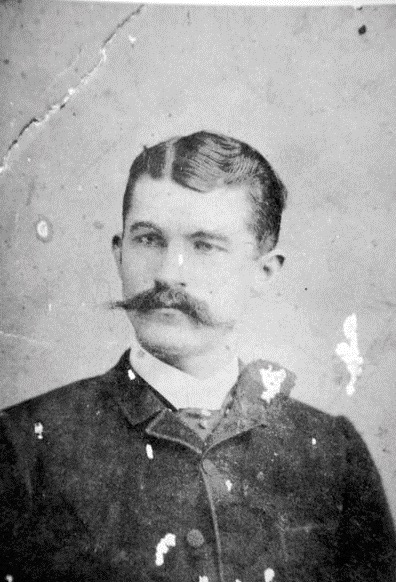
William Newton Ashe (1862-1932). One of his brothers was James Calvin Ashe, of McConnells and another was John Rainey Ashe of the York Cotton Mill. They were the grandchildren of John Rainey of Sharon, S.C. (John Jackson Ashe was their father and their mother was Sarah Jane Rainey/Ashe.) Courtesy of the Kirby Ashe Collection – 2017
John J. Ashe is listed as serving as a private in Company F of the South Carolina 7th Infantry during the Civil War.[i] It was in 1862, during the early part of the war, that his son William Newton Ashe was born. By 1870, John J. Ashe had a large household. In the Census of that year, his occupation is listed as “ginning,” although he was probably still farming as well. The cotton gin was an important institution in a rural community like McConnells, providing local farmers with a convenient place for their crop to be processed. John J. Ashe was able to invest in a gin and make a profit from this activity. The household in 1870 included wife Sarah, children James C. (age 15), John R. (13), Margaret (11), William (9), Sarah (3), and Mary E. (11 months). Also in the house are Mary Rainey, age 39, Cinda Rainey, age 65 (possibly Sarah’s mother), and Newton Hemphill, a farm laborer. The fact that Newton Hemphill had a first name that is the same as young William’s middle name may indicate a family relationship.
In 1873, John J. Ashe was able to build a substantial home for his family in McConnells. The household included the parents and six children.[ii] When William was about 15, tragedy struck the family when his father was killed by a falling tree.[iii] His mother kept the house and lived there until her death in 1892.
Little is known of William’s education and childhood. While he continued the family tradition of farming, he decided to enter an additional line of work. Sometime in the 1880s, when William was in his twenties, he began making bricks on his father’s land. The Piedmont of South Carolina has abundant red clay which can easily be made into bricks, and local brickworks were common. Due to the danger of fire which often spread through congested areas with wood structures, many commercial buildings in the growing towns were being constructed with bricks during this period, creating a strong demand. William constructed a brick works which was eventually called the Ashe-Harshaw Building in McConnells. He called his company Ashe and Ashe, indicating that he was in business with a relative. After Ashe left to expand his brickmaking ventures in other communities, the Ashe-Harshaw Building was used as the

1905 – Sanborn Map diagram of the historic Wymojo Cotton mill, which took over the headquarters of the Ashe Brick Co., in Rock Hill to being the mill operation.
Mutual Gin and Mining Company, and by Hugh John Harshaw as a cotton gin and grist mill.[iv]

Ashe Brick Company started in Rock Hill, S.C. Their headquarters was located just behind WU and west of what became the RH Printing and Finishing Co’s parking lot. Wymojo Yarn Mill took over the Ashe Brick Co., building in ca. 1909.
In the 1890s, W. N. Ashe was living in Yorkville. In 1895, a significant construction project was underway in nearby Rock Hill. The state decided to move Winthrop Normal and Industrial School, now Winthrop University, to the growing town. All of its buildings were to be of brick. William N. Ashe created a brick yard on the site of the new college in the Oakland development and made the bricks for the main building, Tillman Hall, and a dormitory, Margaret Nance. The state provided convict labor to assist in this work.[v] His next big project was in Yorkville. In August 1896, construction began on the York Cotton Mill, of which Ashe’s brother Col. John R. Ashe was general manager. W. N. Ashe served as contractor for the construction of the mill and also made the brick for the mill building on site.[vi] John R. Ashe led the mill until his death in March 1901.[vii]
The 1900 Census records show W. N. Ashe living in Yorkville and boarding with the Mendenhall family. His trade is listed as “manufacturing brick.” Mr. Mendenhall is also engaged in a brick yard. It is not clear if Ashe is working for him or if they are partners. By 1901, Ashe was operating the Rock Hill Brick Works. It was located near the end of West White Street, and he was living on the site. This location was probably just west of the future site of the Rock Hill Printing and Finishing Company (the Bleachery) and near the site of the Wymojo Cotton Mill.[viii] Later, there is a notice that the “Ashe Building” on West White Street was to be occupied for offices for the Wymojo Mill.[ix] The Rock Hill Brick Works supplied 35,000 bricks for the expansion of the Rock Hill Hardware Company in 1901 and also provided brick for an oil mill in Yorkville that year.[x] By 1902, Ashe also had brick manufacturing plants in Yorkville and Spartanburg, where he supplied the bricks for the construction of two large textile mills.[xi] The Rock Hill Brick Works evidently closed temporarily, because they reopened in 1904 with S. E. Mathis as manager.[xii]
In 1906, Ashe built his largest and most important brick manufacturing plant in Van Wyck, across the Catawba River in Lancaster County.[xiii] This site had the advantage of being on a major rail line, the Seaboard Airline Railway (now CSX), and near the Catawba River, providing a constant source of water. This plant would be Ashe’s most successful venture, lasting well beyond his lifetime.

The cotton gin and mill, of the Ashe’s, an early buildings in McConnells, S.C. reported to have been made with their brick.
In 1909, at the age of 47, William N. Ashe married, apparently for the first time. His bride was Edna Love from McConnells. She was about 17 years younger than William. Edna had taught for a number of years in the Graded School in Rock Hill.[xiv] The young couple are shown in the 1910 Census as boarders in the household of Robert H. Massey, a farmer and his wife Willie F. Massey. William is listed as a “brick manufacturer.” Also in the household was William E. Ashe, listed as “superintendent of brickyard.” This could be his nephew, William Elias Ashe, the son of William’s older brother James Calvin Ashe.
On October 2, 1911, it was reported that Mr. W. N. Ashe went to Rock Hill to be with his wife, who was seriously ill, and was to undergo an operation.[xv] She was probably treated in the Fennell Infirmary in Rock Hill, which had a reputation for surgery. Unfortunately, she did not recover, and died on October 14 at the age of 32. Her funeral was held at First Presbyterian Church of Rock Hill, and she was buried in Laurelwood Cemetery. Survivors, in addition to her husband, were listed as her mother, Mrs. Elizabeth Love, her brother, Sadler Love, and sisters Mary Love and Lillie Love, all of Rock Hill.[xvi] Her father, Eaton P. Love, had died in 1887. Evidently, William and Edna had no children during their short marriage.
The Ashe Brick Works at Van Wyck thrived, and became a major supplier for brick in the Piedmont of the Carolinas. In addition to transporting bricks by rail, as the state began to develop a reliable system of roads, bricks could be delivered by truck. In 1928, Ashe developed a ferry near the site of his brickworks to more easily ship bricks across the river to York County. It was run as a private ferry for about ten years, after which York County assumed operations. About 1941, the State Highway Department began operating the ferry. A Catawba Indian, Early Bearly Brown was hired as the ferryman. Brown lived in a house on the York County side of the river near the ferry and operated it for 28 years. In 1959, a new bridge was built just downstream from the ferry site and was named the Ashe-Bradford Bridge.[xvii]
In the 1930 Census, William N. Ashe is shown as head of household in the Waxhaw Township of Lancaster County at age 67. The home was on the north side of Main Street in Van Wyck. He is listed as a widower and his occupation is “operator of brickyard.” Living in the household is James M. Moore, his nephew, age 22, and listed as “assistant manager, brickyard.” William’s sister, Elizabeth, had married Marion Moore.
In February 1932, William N. Ashe died at the age of 70. He had suffered for several months from a heart condition. He was described as a leading farmer and businessman, with extensive farming interests and the successful W. N. Ashe Brick Company. He had been a leader in developing the small town of Van Wyck. He was a member of the Van Wyck Presbyterian Church, and had served as an elder for many years. He was also the organizer of the Van Wyck Community Club. Two sisters survived William, Mrs. J. M. Williams (Addie) of McConnells and Mrs. Marion Moore (Elizabeth) of Rock Hill, along with numerous nieces and nephews. The funeral service was held at Van Wyck Presbyterian Church. There was an extensive group of honorary pallbearers from a wide vicinity, composed of leading business and civic men. Ashe was buried alongside his wife at Laurelwood Cemetery in Rock Hill.[xviii]
The Ashe Brick Company continued for many years under the management of the Moore family. Around 1950, the plant employed 80 people and was processing 75,000 bricks per day. The presence of a stable employer was a major influence on the growth and economic viability of Van Wyck.[xix] Eventually, the Ashe Brick Company became part of the Boral Company. The Van Wyck plant was closed in recent years, and the facility was demolished in 2012.[xx]
SOURCES:
[i] Civil War records included in Ancestry.Com.
[ii] Elizabeth Reed, “Neighborhood Spirit Helped Build Old Ashe Home,” Rock Hill Herald, February 9, 1950.
[iii] Ibid.
[iv] See the Roots and Recall article for 130 Church Street in McConnells, the Ashe-Harshaw Building.
[v] Louise Pettus, “Local Brickmaking History,” undated article.
[vi] “The York Cotton Mill,” Rock Hill Herald, August 26, 1896 and September 5, 1896.
[vii] “A Tragedy in York,” Rock Hill Herald, March 20, 1901.
[viii] Rock Hill Herald, August 11, 1901.
[ix] Rock Hill Herald, March 22, 1904.
[x] Rock Hill Herald, August 11, 1901.
[xi] Rock Hill Herald, April 15, 1902 and October 11, 1902.
[xii] Rock Hill Herald, April 15, 1904.
[xiii] Louise Pettus, “Local Brickmaking History,” undated article.
[xiv] Rock Hill Record, October 16, 1911.
[xv] Rock Hill Record, October 2, 1911, taken from the Lancaster News.
[xvi] Rock Hill Record, October 16, 1911.
[xvii] Louise Pettus, “The Ferry at Van Wyck,” undated paper.
[xviii] Rock Hill Herald, February 12, 1932.
[xix] Elizabeth Reed, “Ashe Brick Works,” Rock Hill Herald, June 8, 1950.
[xx] Bennett Gunter, “Fond Memories of the Ashe Brick Company,” Carolina Gateway, November 27, 2012.
Sowell Brick Company operated at approximately the same Rock Hill location, beginning in 1907. The Rock Hill Record reported, April 29, 1907 – “The Sowell Brothers have been making preparations for opening a brick yard on the railroad above the Syleecu Man. Co. the building are complete and expecting the machinery soon. It will be known as Sowell Brick Company and J.L. Sowell will be in charge. He is the brother of S.N. Sowell of the Rock Hill Bottling Works. The Supt. will be G. W. Hough, of Camden, who has been in charge of the Camden Press Brick Company for six years. The company will manufacture high grade brick for all building purposes.”
May 20, 1907 – “The Sowell Brick Co has received it’s machinery. J.L. Sowell, manager of the plant is living in the Steele cottage next to Mr. W.H. Stewert and Mr. Hough will have rooms with Mr. J.S.H. Faris.
Obituary of Mrs. Edna Love Ashe—Mrs. Edna Ashe, wife of W. N. Ashe, of Van Wyck, died October 14, 1911 in the Fennell Infirmary in Rock Hill. Mrs. Ashe was before marriage Miss Edna Love. She was born and raised at McConnellsville, but for a number of years before marriage had lived in this city, where she taught in the graded school. She was 31 years of age, and was beloved by all who knew her. She leaves, besides her husband, her mother, Mrs. Elizabeth Love; two sisters, Misses Mary and Lillie Love, and one brother, Sadler Love, all of this city. – The Yorkville Enquirer, Oct 17, 1911.
Stay Connected
Explore history, houses, and stories across S.C. Your membership provides you with updates on regional topics, information on historic research, preservation, and monthly feature articles. But remember R&R wants to hear from you and assist in preserving your own family genealogy and memorabilia.
Visit the Southern Queries – Forum to receive assistance in answering questions, discuss genealogy, and enjoy exploring preservation topics with other members. Also listed are several history and genealogical researchers for hire.
User comments welcome — post at the bottom of this page.
Please enjoy this structure and all those listed in Roots and Recall. But remember each is private property. So view them from a distance or from a public area such as the sidewalk or public road.
Do you have information to share and preserve? Family, school, church, or other older photos and stories are welcome. Send them digitally through the “Share Your Story” link, so they too might be posted on Roots and Recall.
Thanks!
User comments always welcome - please post at the bottom of this page.

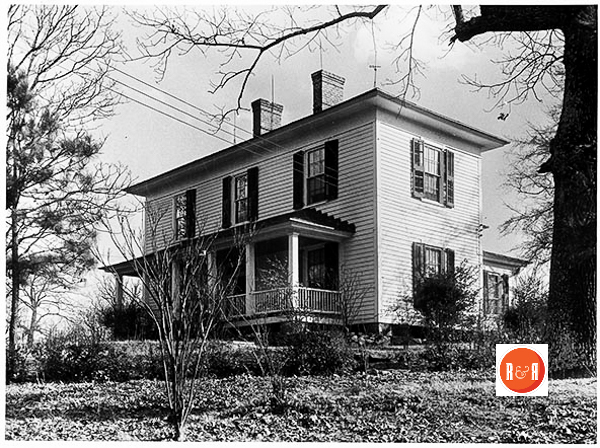
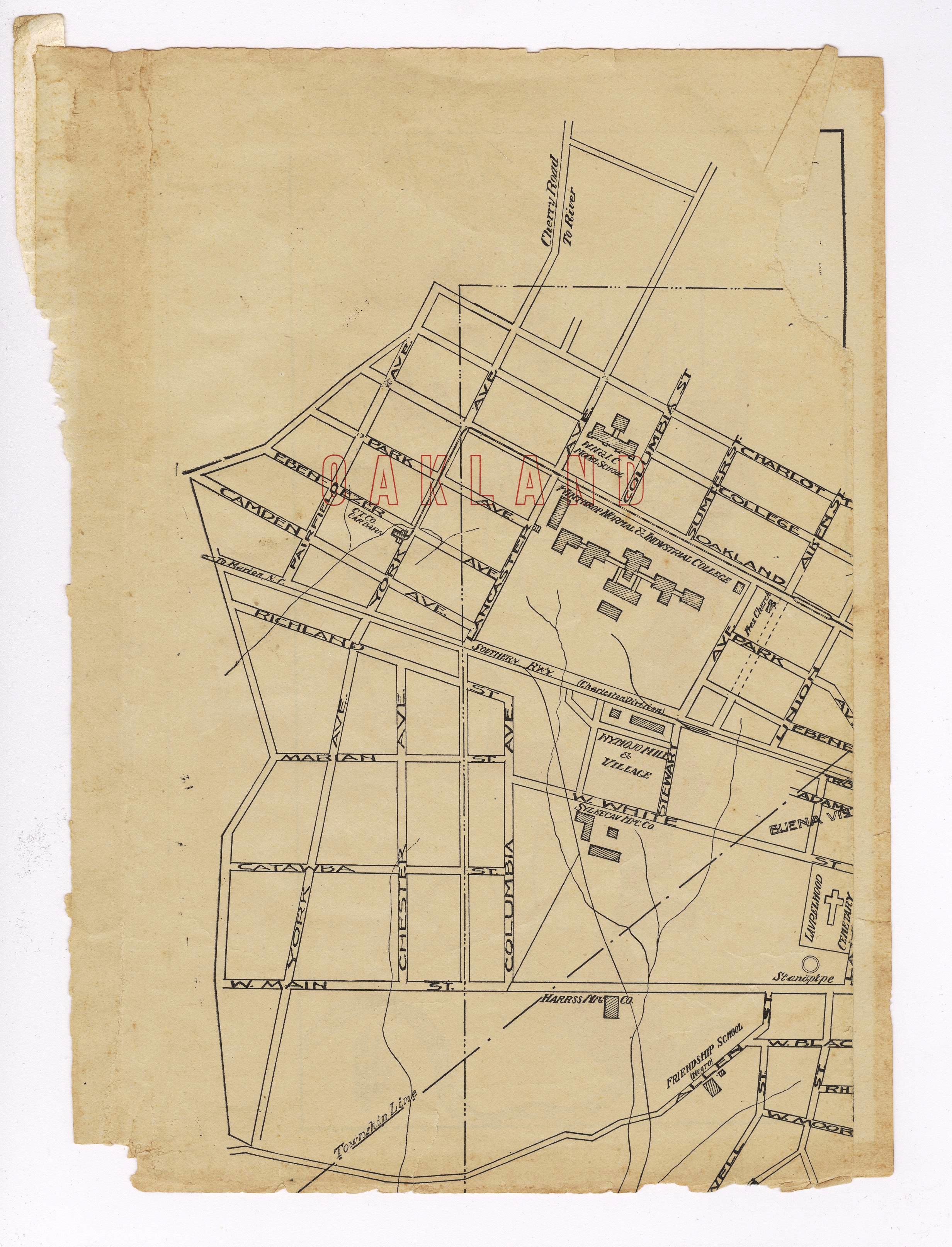
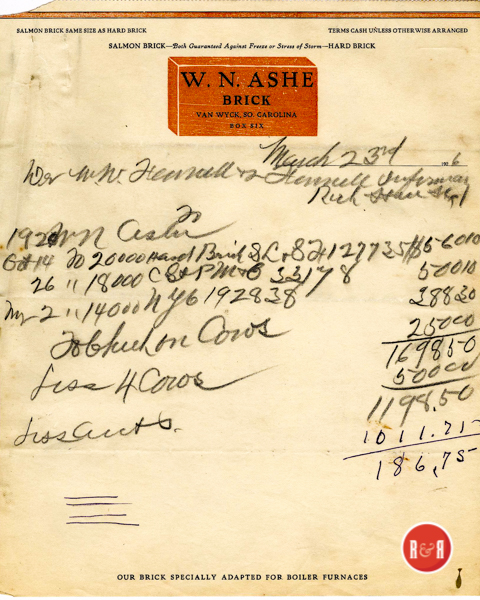
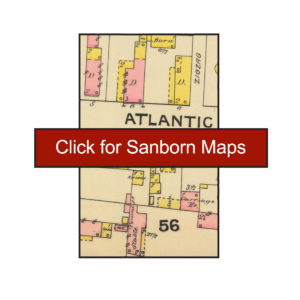





Share Your Comments & Feedback: